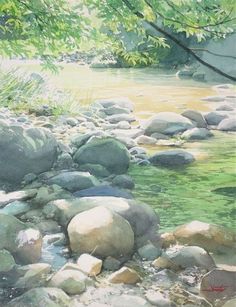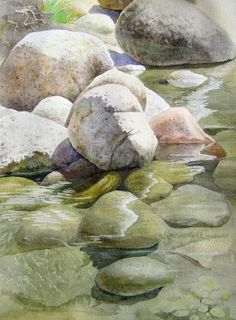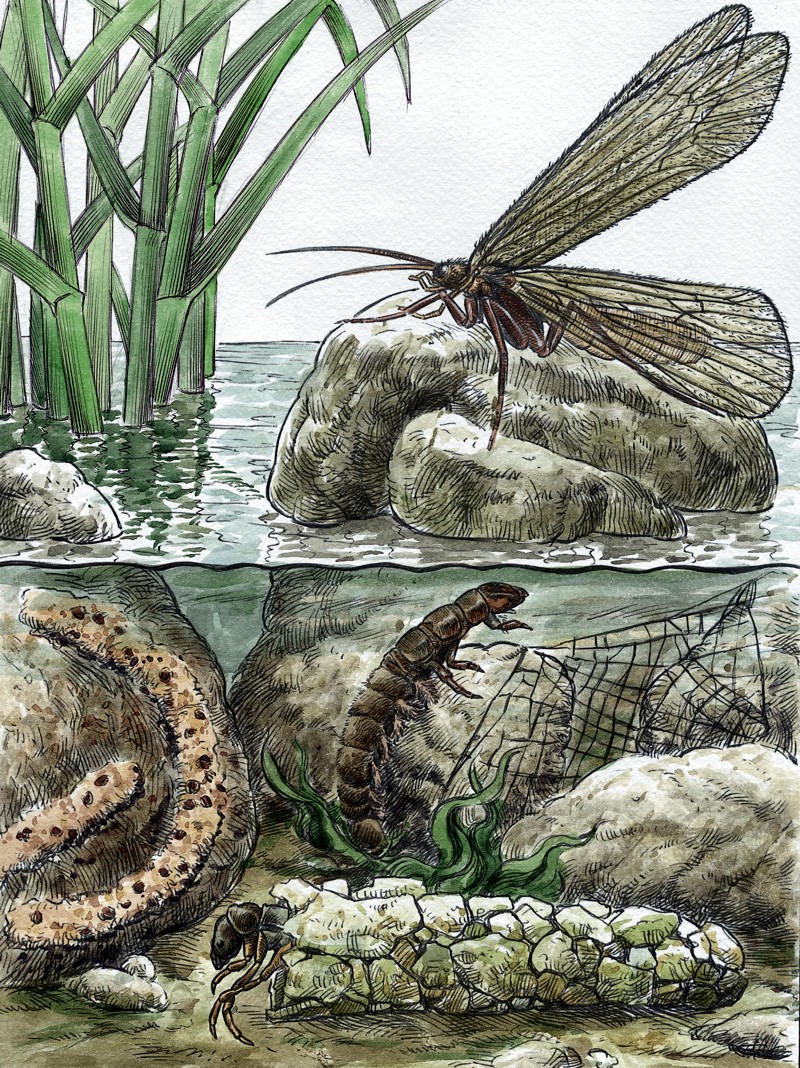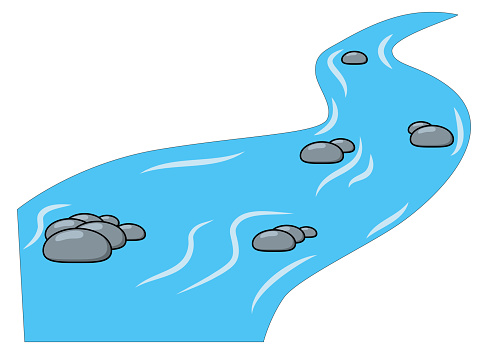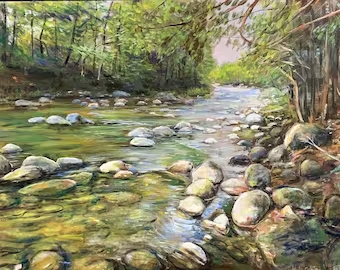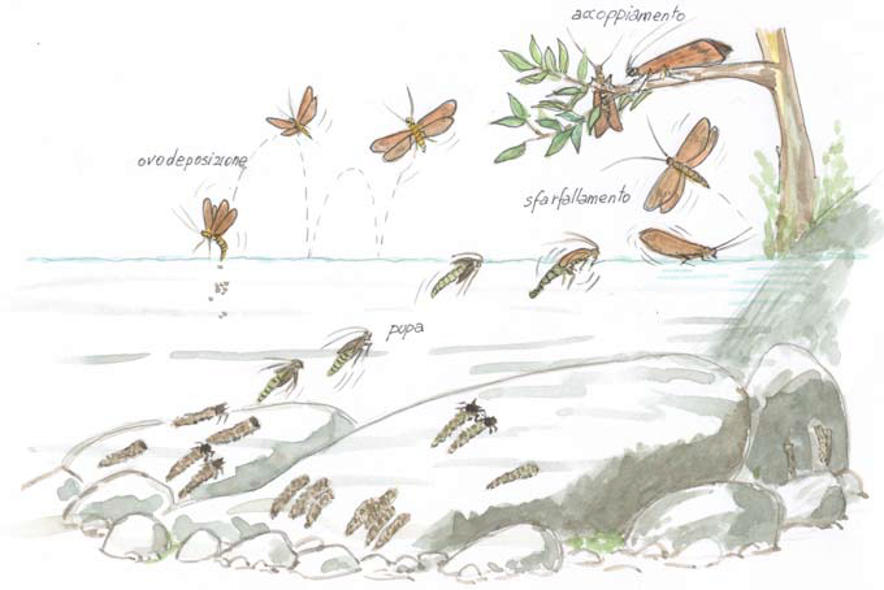Streams and creeks are dynamic systems, which constantly change from a physical and biological point of view. A stream is an ecosystem where many organisms live that together form a biological community (or biocenosis). It refers not only to the set of water, banks, plants and animals but also to the complex of relations between organisms and between them with physical elements.
In this aquatic environment, the nourishment at the origin of the food chain comes mainly from the outside; that is, there are few primary producers or vegetables. Observing the seabed you can see heaps of organic debris, such as twigs, foliage, humus, all material that comes from the surrounding area thanks to the rains. This material is consumed by a myriad of small animals (called macroinvertebrates) that populate the seabed. Macroinvertebrates are among the most common forms of animal life in a watercourse. They are mainly insects, crustaceans, molluscs, planaria and annelids. These, in turn, are the main source of food for other invertebrates as well as carnivorous fish, amphibians and birds.
Invertebrates often have to face with the speed of the current. For this reason they demonstrate particular adaptations such as the dorso-ventral flattening of the body, the presence of powerful suction cups or crowns of hooks with which they attach to the bottom. These animals use different parts of the organic debris and have different feeding modes. There are therefore collectors, shredders and filters.
If there were no macroinvertebrates that consume and 'recycle' the debris, the large amount of organic substance present on the bottom would undergo decomposition, with relevant phenomena also downstream. Water, in fact, would be too rich in nutrients and would encourage the development of bacteria and filamentous algae. These organisms are at the basis of the self-purification of watercourses. The larvae of some insects live for many months on the bottom of the stream, under the pebbles or attached to the stones. They are mainly Plecotteri, Ephemeroptera, Trichoptera and Diptera. With the metamorphosis the larvae transform into adults and get out of the water to reproduce; subsequently they copulate and lay the eggs again in water. Streams and creeks are also spawning environments for frogs, toads and salamanders. In the case of the common toad, the eggs are laid in long gelatinous cords. In addition to eggs you can easily observe the larvae of these animals. Among the reptiles we can find the Dice Snake and the Grass Snake, two species of snake very linked to the water, which hunt fish and amphibians.The banks are always covered with shrubs and trees whose species can tolerate periods of submersion.If you look at the pebbles of the bottom, then we will notice patches of color ranging from dark brown to reddish and with many varieties of green and blue green. Algae, lichens and aquatic mosses are responsible for these vivid colours and constitute the so-called 'perifiton'.
